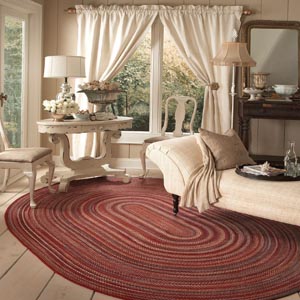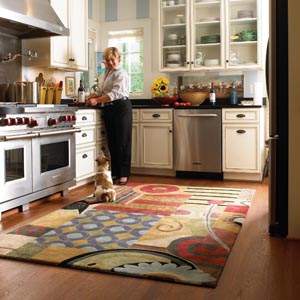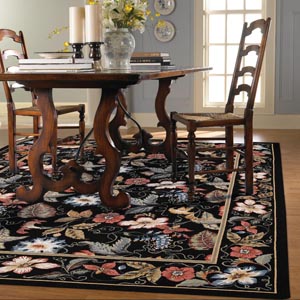 |

Area rugs play an important role in establishing the style of your room. Photo courtesy of Capel Rugs

If you're unsure how a rug will look in your home, look for a retailer that allows a free home trial. Photo courtesy of Capel Rugs

An area rug can complement hardwood flooring, so don’t hesitate to accessorize even the most exquisite hardwood. Photo courtesy of Capel Rugs
An area rug can complement hardwood flooring, so don’t hesitate to accessorize even the most exquisite hardwood. Photo courtesy of Capel Rugs
Feet First
A great way to start your design project is by choosing your rug first, and designing your room around it. “Area rugs make a bold statement about the design inspiration behind each room, acting as a backdrop for the space,” explains Donielle Arabia, director of public relations for Couristan.
-
The Great Cover-Up
Expert advice for finding the best rug for your room.
- by Mary Best
Area rugs can be a magic carpet ride to transforming the interior of your home. They often provide a central focal point, which is essential for coordinating various furnishings in a room. "Because rugs are often the largest accessory in a room, they play an important role in establishing the foundation of style,” says Donielle Arabia, director of public relations for Couristan. “They tie all of the surrounding elements together, such as wall color, wood tones in furniture, window coverings and pillows.”
As you shop for rugs, there’s a lot to consider. Here are some tips from industry experts to simplify your decorating efforts:
Choose Your Rug First
Because a rug is often the centerpiece of a room, many interior designers suggest selecting the rug first and building the rest of the room around it. Arabia agrees: “Area rugs make a bold statement about the design inspiration behind each room, acting as a backdrop for the space.”
Select Secondary Colors
Arabia warns against an overly “matchy-matchy” effect because it’s, well, boring. Instead, she suggests choosing less obvious color combinations that boost other fabrics in the room. “You should look to the secondary and tertiary colors in an area rug as inspiration for throw pillows, upholstery and window coverings,” she says. “Selecting a subtle accent color in the rug rather than the primary color will create an interesting unified look without being monochromatic.”
Use Color Strategically
Select a rug with colors and patterns that don’t compete or clash with other elements, such as the upholstery or wallpaper. Color also influences your perception of the size of the room. Darker colors, for example, will make a room feel cozy but can also make it seem smaller. In addition to color, consider texture. The fibers of a rug can also enhance a room’s décor.
Try it Out
If you are unsure how a rug will look in your home, look for a retailer that allows a free home trial. “I think it’s important to take a rug home and see how it looks to scale,” says Bud Young, vice president of marketing for Capel Rugs. “Also, the lighting conditions in a consumer’s home may be dramatically different than in a retail store.”
Layer it
An area rug can complement hardwood flooring, so don’t hesitate to accessorize even the most exquisite hardwood. Arabia says placing an area rug over hardwood floors adds a sense of comfort and provides another visual layer to the overall design scheme.
Know Your Space
Note the amount of traffic the rug will have. If it’s a high-traffic area, look for a rug with a detailed pattern, which makes worn areas less apparent.

